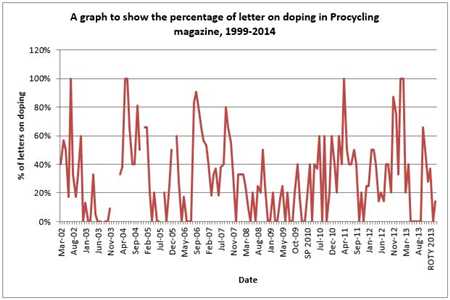

The realm of gaming is not just about luck, but also about the balance between the house and participants. A significant aspect of this balance lies in the system’s design, which seeks to offer an environment where everyone has the chance to succeed. Understanding this crucial factor can redefine how enthusiasts approach their favorite games.
When examining the mechanics behind gaming experiences, one must consider how specific elements contribute to an engaging atmosphere. This underlying principle dictates how much of the stakes are returned to users over time, fostering a sense of trust and reliability. Such transparency is vital, as it can significantly influence one’s choice when engaging with various gaming platforms.
Furthermore, a commitment to ensuring a rewarding experience is paramount. By maintaining a structure that promotes high returns, establishments cultivate loyalty among participants. This fosters an environment where individuals feel confident in their engagements, knowing that their investments stand a reasonable chance of bearing fruit.
The concept of return on investment in online gaming is a crucial aspect that directly impacts the gaming experience. It reflects the portion of funds that a player can expect to retrieve over time from their wagers. This measurement plays a significant role in shaping the perception of games, as it provides insight into their potential profitability.
Return figures are typically expressed as a percentage and vary from one game to another. A higher value may indicate a more lucrative opportunity, attracting gamers who prioritize long-term value in their engagements. Conversely, a lower figure may deter potential players who seek better financial returns.
Understanding these calculations can empower enthusiasts to make informed choices. It allows individuals to assess the potential risks and rewards associated with different titles, paving the way for more strategic gameplay. Awareness of how much one can anticipate reclaiming encourages players to explore various options available in the online gaming market.
Ultimately, grasping the implications of return percentages fosters a sense of confidence and awareness among gamers. By recognizing the relationship between their investments and potential outcomes, they can navigate the vibrant world of online gaming with greater assurance.
The term refers to a key concept in gaming that reflects the expected returns to users over time. It is a crucial factor that helps individuals evaluate the likelihood of winning while engaging in various games of chance or strategy. As a vital element of gaming systems, this concept influences player experiences and perceptions of various offerings.
Understanding this notion is essential for anyone looking to maximize their enjoyment and potential rewards. Here are some important points to consider:
When assessing any gaming experience, this figure serves as a guideline. It allows enthusiasts to make informed decisions about where to invest their time and resources. Ultimately, grasping this principle empowers users to engage with confidence.
This section aims to clarify fundamental ideas related to gaming and wagering systems. By understanding these principles, individuals can appreciate how various elements contribute to a balanced gaming experience. It is essential to grasp the underlying mechanics that govern how games function, impacting both participants and the overall environment of play.
Return to Player is a term that describes the expected percentage of wagers that will be returned to participants over time. This figure highlights the relationship between the amount staked and the potential payouts available, serving as a benchmark for evaluating different gaming options. A higher value in this area typically indicates a more rewarding experience.
Volatility refers to the risk and reward profile associated with a specific game. Games with high volatility may provide substantial payouts less frequently, while those with low volatility tend to deliver smaller wins more regularly. Understanding this aspect helps individuals align their gaming choices with their personal preferences and risk tolerance.
House Edge is another crucial concept that denotes the mathematical advantage held by the gaming establishment over participants. This figure is typically expressed as a percentage and is derived from the total amount wagered. Recognizing the house edge provides insight into the long-term profitability of various games, guiding individuals in their selections.
The significance of a balanced return dynamic cannot be overstated when engaging in gaming pursuits. It directly influences the enjoyment and potential success of participants, allowing them to feel more secure in their choices. A system that offers a promising return cultivates trust and encourages longer interaction with the platform.
Understanding how the return mechanism operates is vital for enthusiasts. It empowers them to make informed decisions, enhancing their overall experience. The assurance of a generous return fosters a sense of confidence, motivating players to explore various gaming options with enthusiasm.
Moreover, a well-structured return arrangement acts as a critical component in maintaining a competitive edge in the market. Gamers are more likely to frequent platforms that prioritize their well-being, resulting in increased loyalty. This relationship between return provisions and user satisfaction underscores the importance of transparency in the gaming environment.
The computation of return values in gaming environments is essential for understanding the advantages offered to participants. This analysis involves assessing how much a game returns to its audience over an extended period. By breaking down the principles involved, one can gain insights into the underlying mechanisms that determine the winning potential.
To calculate the return value, follow these steps:
Return Percentage = (Total Payouts / Total Wagers) x 100
By applying this straightforward formula, one can uncover the expected return that players might anticipate during their gaming sessions. This clarity fosters a better understanding of the balance between the risks involved and the rewards available.
It’s important to note several factors that can influence the return value:
Understanding these components allows participants to make informed choices and enhances their overall experience in the gaming landscape.
This section delves into the approaches and illustrative instances that underpin the principles of equitable gaming experiences. By analyzing specific frameworks and their practical applications, we can better understand how these concepts materialize in various gaming scenarios.
A common method employed in gaming environments involves statistical analysis of outcomes to assess the likelihood of results over extended periods. For example, in a slot machine setup, the underlying mechanisms are designed to return a significant portion of wagers to individuals through a combination of randomization and payout structures.
To illustrate this further, consider a video poker game with a specific set of rules and probabilities. The designer typically calculates possible winning combinations and their corresponding frequencies. This analysis allows players to make informed choices, enhancing their experience while providing insights into potential returns.
Moreover, the implementation of simulations can highlight patterns and trends within gameplay. Testing various parameters through software can reveal how different factors impact the likelihood of winning, thus providing a transparent view of the game’s mechanics.
In conclusion, examining methodologies and real-world examples reveals how these principles work in practice. Understanding the operational aspects helps players feel more confident in their gaming choices, ultimately contributing to a more enriching experience.
The implementation of an optimal return mechanism significantly influences the creation of new gaming experiences. Developers are increasingly recognizing the importance of striking a balance between player satisfaction and potential profitability. This approach encourages innovation, as studios strive to engage users with captivating narratives and dynamic features.
When software creators prioritize a high return on investment, they tend to design mechanics that keep participants invested in the gameplay. Variety in themes, characters, and bonus features are carefully integrated to enhance overall engagement. This strategy not only attracts new users but also fosters loyalty among existing audiences.
Furthermore, the focus on equitable return structures can lead to a more competitive market. Developers are motivated to differentiate their offerings through unique gameplay elements and graphical advancements. As a result, the gaming industry evolves, pushing technological boundaries and delivering richer experiences.
In the realm of gaming, the presence of oversight and clarity is paramount. Players seek assurance that their experiences are governed by established standards, fostering a sense of trust in the systems at play. Comprehensive regulations serve as a foundation, promoting ethical practices and safeguarding the interests of all involved.
Regulatory bodies play a crucial role in maintaining the integrity of the gaming industry. They introduce frameworks that operators must adhere to, which include:
Transparency is equally important, as it builds confidence among participants. Key aspects of transparency include:
Ultimately, a combination of robust regulations and unwavering transparency cultivates a healthier gaming environment, empowering individuals to engage with confidence and assurance.
The foundation of a reliable gaming environment is built upon the benchmarks set by the industry. These guidelines aim to promote transparency, secure gameplay, and enhance user experiences. By adhering to established norms, providers create a trustworthy atmosphere that fosters player confidence.
Regulatory bodies play a pivotal role in defining these benchmarks. Their oversight ensures that operators maintain a high level of integrity in their offerings. Compliance with these standards is essential for organizations seeking legitimacy and a strong reputation in the competitive market.
Moreover, technological advancements have significantly influenced how these criteria are developed and enforced. Sophisticated algorithms and comprehensive testing methodologies are now standard practice, guaranteeing that outcomes are not only random but also demonstrably unbiased. This commitment to innovation continually shapes the landscape, allowing for improvements that benefit consumers and providers alike.
Ultimately, the adherence to these criteria not only uplifts industry credibility but also empowers enthusiasts, providing them with a platform where they can engage with peace of mind, knowing that the gaming experience meets rigorous expectations.